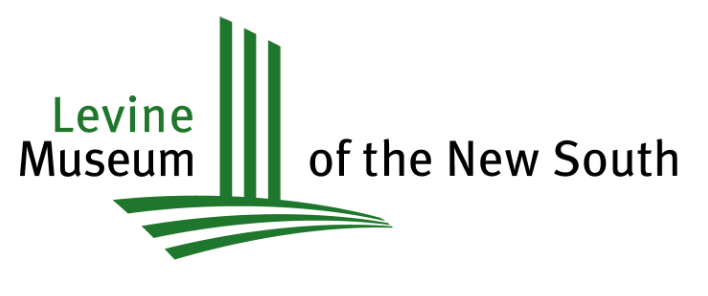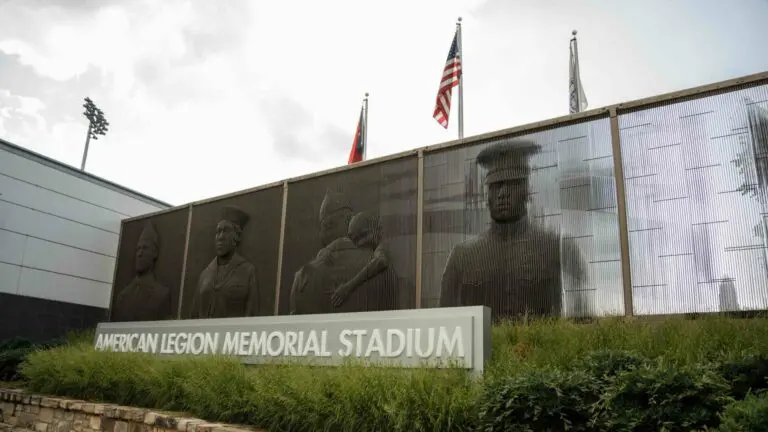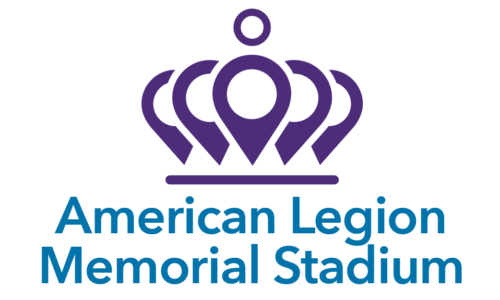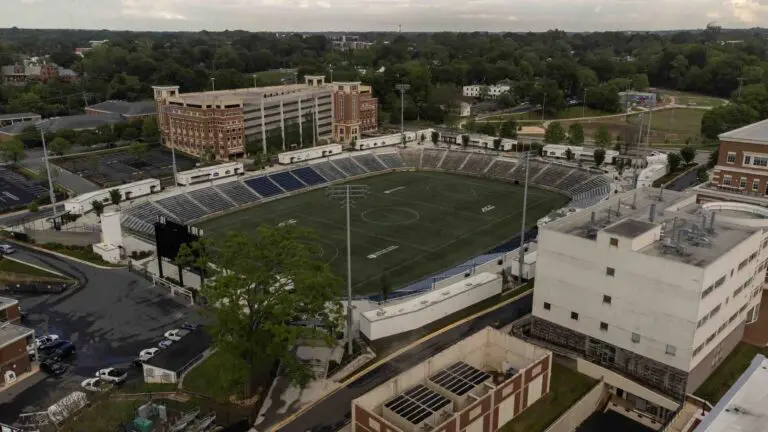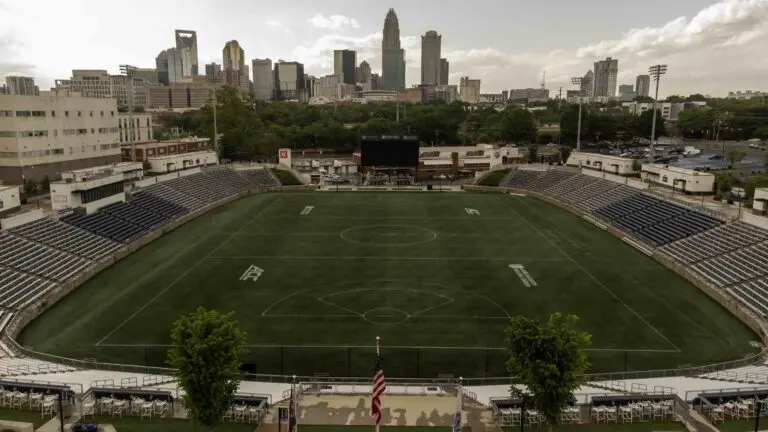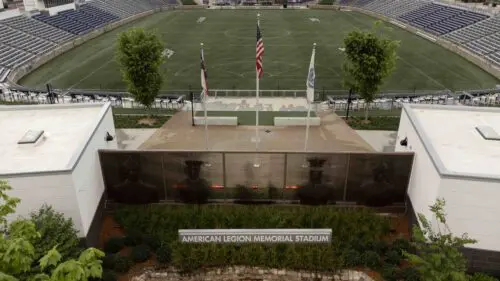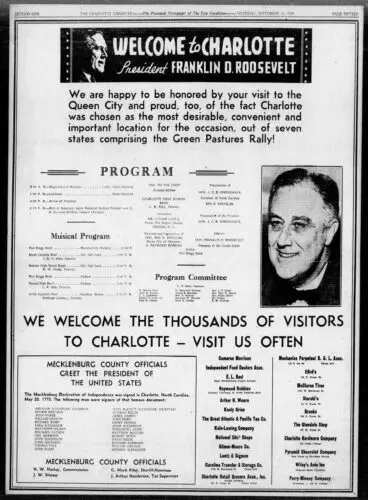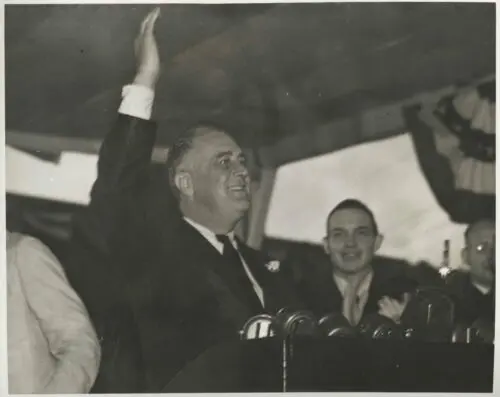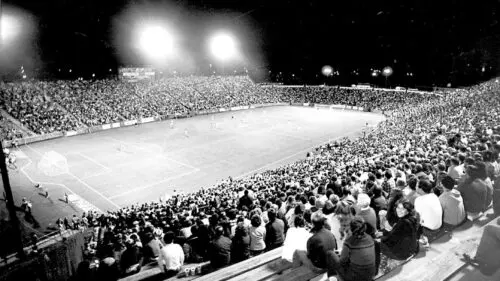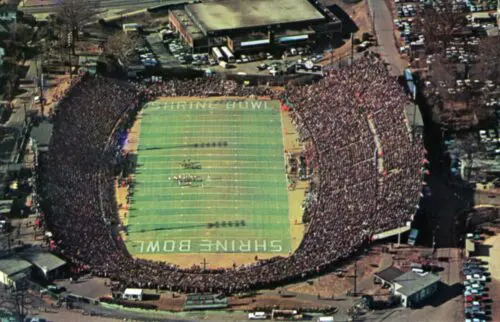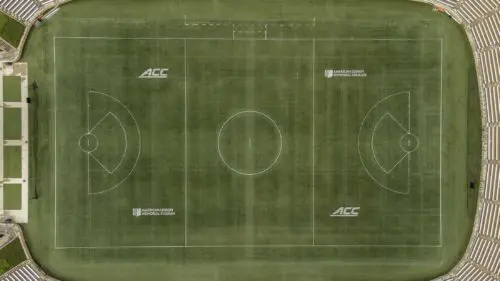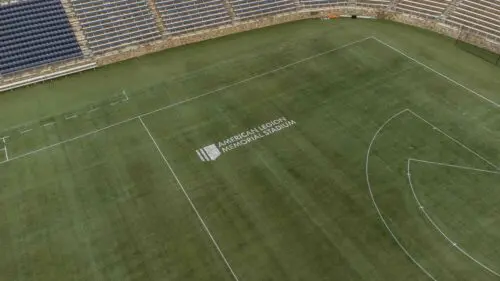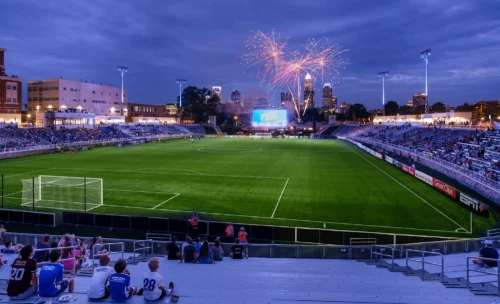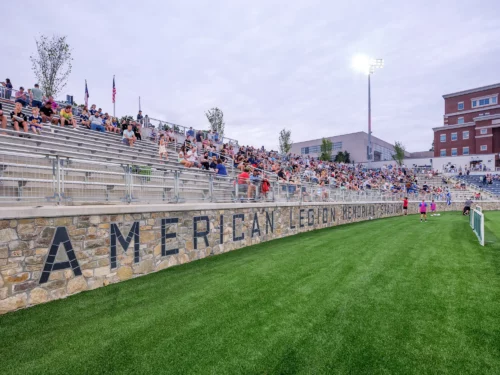The American Legion Stadium was the first major spectator sports facility in Charlotte, North Carolina. Many people may not realize that the Great Depression and the subsequent New Deal programs and initiatives that followed were largely responsible for the Stadium’s construction.
The 1920s has been called the Golden Age of American Sports and the Age of the Spectator. Until the Stock Market Crash of 1929, the United States had a strong economy, and many workers had more leisure time to attend sporting events. The middle class also saw an increase in income and automobiles like the Model T and Model A became more affordable for them, making travel easier. The introduction of the radio made it easier for sports fans to follow their teams. By the start of the Great Depression, spectator sports had become integral part of life in the United States, and they were able to survive the difficult times ahead.
In President Franklin D. Roosevelt’s first 100 days in office in 1932, he created the New Deal. It consisted of the three R’s: relief offering temporary to help to suffering and unemployed Americans, recovery to help the economy bounce back, and reform which targeted the causes of depression with the goal of preventing a crisis like that from every happening again.
A number of agencies were created through the New Deal, like the Works Progress Administration (WPA) which created jobs for unemployed Americans to stimulate the economy and the Federal Emergency Relief Act (FERA), which provided grants from the federal government to state governments for a litany of different projects in education, construction, the arts, and agriculture. By providing funding for projects via grants, the New Deal created desperately needed jobs. Under FERA, the Civil Works Administration (CWA) provided short-term employment for unskilled laborers.
Charlotte leaders like Mayor Arthur E. Wearn were eager to benefit from New Deal funding. On January 3, 1934, Wearn was able to secure $70,000 in FERA and CWA funding so the city could start working on a stadium that could seat 10,500 in Independence Park. The Stadium is named for Hornet Nest Post No. 9 of the American Legion. This chapter of the Legion supported the construction of the stadium and wanted it to serve as a memorial to soldiers from Mecklenburg County who died in World War I. The Stadium was officially named the American Legion Memorial Stadium on June 13, 1934.
By December of 1935, earth had been moved to create a playing field bordered by a rock wall and surrounded on three sides by grass. However, the city did not have the funding to put the seats in. Ben Douglas defeated Wearn and became Mayor of Charlotte in May of 1935. One of his first acts as mayor was to hire James Marshall as city manager. Marshall immediately got to work on preparing a list of projects for submission to the WPA for potential funding.
The WPA had a major presence in Charlotte as there was a district office for the agency on Tryon Street. Charlotte city officials applied to WPA to complete the stadium by putting the seating. The application was approved on December 27, 1935, and the city chose concrete for the seats. The WPA paid for $51,617 and the City of Charlotte only paid for $4,912 worth of work. The American Legion Memorial Stadium costs $120,000 in total.
By January of 1936, workers were installing the Stadium’s seating. They worked for 8 months straight with the goal of completing the work by President Franklin Roosevelt’s arrival in September of 1936. American Legion Memorial Stadium officially opened on September 10, 1936, with the Green Pasture Rally as is first event, where President Roosevelt gave a rousing speech.
Later that month, on September 26, 1936, the Stadium hosted its first college football game between UNC-Chapel Hill and Wake Forest. The Tar Heels prevailed with a 14-7 win. American Legion Memorial Stadium went on to host countless high school football games, professional wrestling events, United States Football League games, and band competitions. Among its most famous football games, stands the Shrine Bowl of the Carolinas, which the stadium hosted from 1937 to 2000, reaching its peak attendances in the 70s. The bowl, now hosted in Spartanburg, SC, is the nation’s oldest high school all-star game where 44 of the best players from NC and SC play each other to help draw awareness to the Shriners hospitals.
In March 1979, the stadium hosted the Carolina’s first major soccer match played between the Minnesota Kicks and the Atlanta Chiefs, both members of the North American Soccer League. The stadium has hosted professional wrestling events like the original editions of the Great American Bash in 1985, 1986 and 1987, where wrestlers like Dusty Rhodes could be seen in action and Ric Flair once arrived on a helicopter. NightBEAT, an event where the top marching ensembles gather to perform, was hosted at the Stadium in 1999.
The stadium was home to the city’s first professional soccer team, the Carolina Lightnin’, crowned champions of the now folded American Soccer League championship in 1981 in front of a 20,163 crowd. The championship marked Charlotte’s first modern professional sports championship.
The Stadium underwent a $31.7 million renovation in 2019 and became the new home of the United Soccer League (USL) team Charlotte Independence. The Super League Carolina Women’s professional soccer team will also play at the Stadium starting in August of 2024. Major League Rugby (MLR) has come to Charlotte, Anthem Rugby and the Premier Lacrosse League (PLL) the Carolina Chaos team both use the stadium for home matches and games respectively starting with the 2024 season.
American Legion Memorial Stadium is still an important part of the Charlotte sports scene as a place where people gather to watch sports. The Stadium played an important role in making Charlotte a global city, as it hosted many major events that attracted big crowds and continues to do so through soccer, a global sport.”
